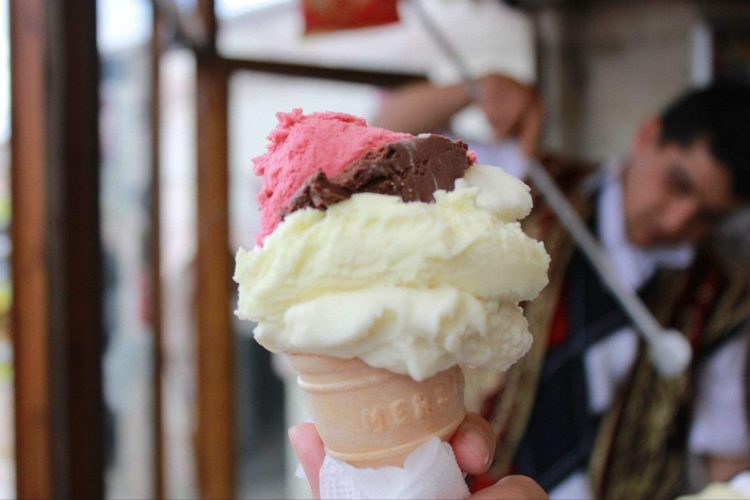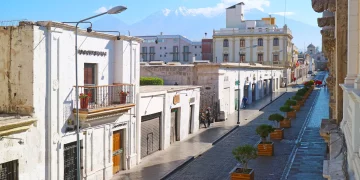In the enchanting realm of culinary delights, a playful symphony of sounds and textures comes to life in the form of Turkey’s cherished frozen treat, Dondurma. Translated into Chinese as “咚哆玛,” this onomatopoeic phrase whimsically captures the percussive sounds of the traditional ice cream’s creation.
A Symphony of Flavors and Textures
Dondurma, more than just a mere ice cream, is a testament to the artistry of Turkish confectionery. Its chewy texture invites a comparison to the world of candies, standing somewhere between the pull of taffy and the creaminess of fudge. This unique consistency defies the ordinary spoon, making forks and knives the instruments of choice for its consumption. The elegant manner of savoring Dondurma is as much a part of its charm as its flavor and form.
For many, the mention of Turkish ice cream conjures images of viral videos showcasing vendors’ playful, acrobatic interactions with customers. The Dondurma maestro, with a smile, teases patrons by offering a cone, only to whisk it away with a swift movement of his long-handled metal spatula. In the moments of surprise that follow, the vendor performs a dance of sorts, twirling and manipulating the ice cream before finally bestowing it upon the eager customer. This playful battle of wits has made Dondurma not just a treat, but an experience, drawing tourists from far and wide to taste the “flying ice cream.”

The Secret Behind the Elasticity
The ingredients of Dondurma are deceptively simple: sheep’s milk, sugar, salep (orchid flour), and mastic. Sheep’s milk, rich and unadulterated, provides the foundational creaminess and “stickiness” that characterizes Dondurma. It’s this pure sheep’s milk production that sets the stage for its signature taste and texture.
Salep, the secret ingredient, is ground from the tubers of wild orchids native to Turkey and Iran. This magical powder not only imparts a unique flavor but also bestows the ice cream with its hallmark elasticity and resistance to melting.
Due to the overharvesting risks posed to the wild orchids by their popularity in the Turkish market, the government has restricted the export of salep to preserve this precious plant. Therefore, to experience authentic Dondurma, one must venture to the land where it is lovingly crafted.
The Origin of Dondurma
Legends abound regarding the origin of Dondurma. One of the most recounted tales speaks of an Ottoman merchant who sold a beverage made from orchid flour and cow’s milk. One day, he buried the unsold drink in the snow to prevent spoilage. Upon retrieval the next day, he discovered that the drink had thickened considerably. After repeated experiments, he found that adding milk and sugar to the orchid beverage significantly increased its viscosity, allowing it to stretch like glue. Thus, the delightful Dondurma was born.
The modern method of making Dondurma involves gently heating sweetened goat’s milk, then incorporating salep, and stirring with a long metal rod until the desired thickness is achieved. After cooling at room temperature, it is frozen for storage. This technique ensures the smooth yet elastic texture that makes Dondurma an unforgettable indulgence.





















